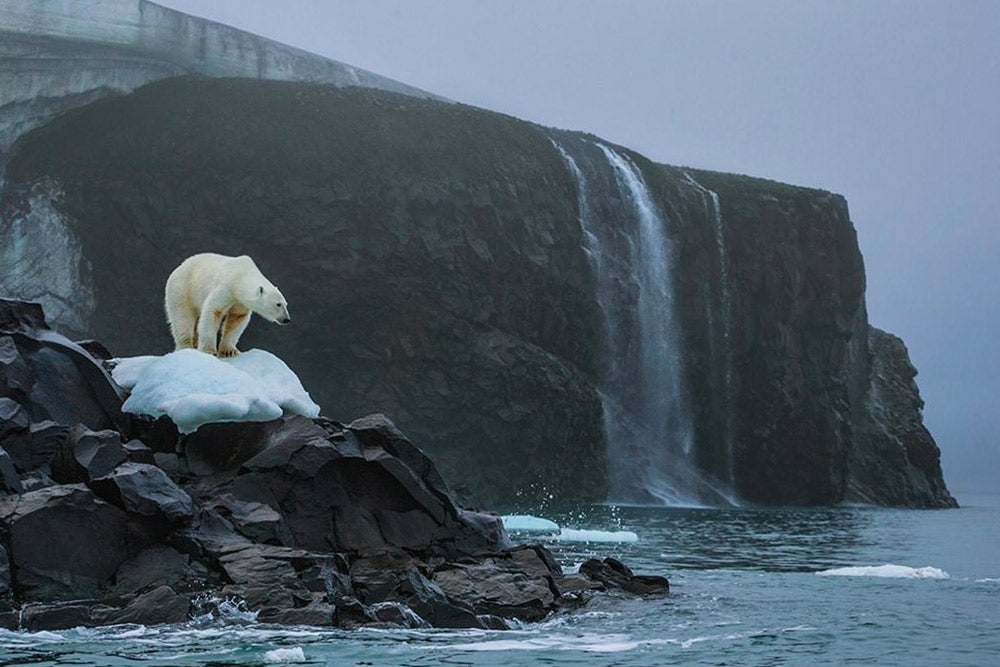He climate change It is one of the most popular topics of conversation in these times of information, awareness and constant struggles for causes of all kinds.
But are we really taking action to stop the impact we are causing on the Earth?
Talking about what “must be done” or what “is wrong” is simple, the difficult thing is to apply it to oneself and take on the challenge of wanting to improve. We are aware of it on paper, but we do not put it into practice. There are places, cities and even countries that can disappear in a shorter period of time than we think; and it is in our hands to avoid, or at least stop, a tragedy that we are being warned about.
Below, we tell you about four wonderful places that are “in danger of extinction”:
THE ALPS: IN 100 YEARS THERE WILL BE NO GLACIERS LEFT

The mountain range of The Alps The Alps have an area of such magnitude that they touch eight European countries: France, Austria, Germany, Switzerland, Monaco, Slovenia, Italy, and Liechtenstein. The mountains and imposing peaks of the Alps have always been one of the favourite destinations for sports such as hiking, skiing and snowboarding. However, the increasing rise in temperatures caused by global warming has forced a drastic reduction in the snow and winter sports seasons.
There is a serious problem in The Alps and their hearts are melting glaciers, temperatures have risen by up to three degrees in recent years, mountains are collapsing and mountaineering trails are disappearing.
Data such as that, in less than 100 years, the glaciers from the mountain range will have practically disappeared completely, or that the peak of Marmolada today has already lost 80% of its volume, are worrying and generating fear.
We usually think that if we start acting, the evil will eventually be reduced; the problem is that we never really start taking action. Even in the hypothetical case that global warming could be eradicated today, much of the damage caused to the Alpine ecosystem would be irreversible, since the glaciers would continue to lose around 50% of their volume by 2050.
MALDIVES AND THE GREAT BARRIER CORAL: “COME VISIT US WHILE WE ARE STILL HERE”

One of the paradises that the planet has given us could disappear completely by the end of the century. The Maldives, this collection of islands, many of them unspoiled, with crystal-clear waters, atolls, white sand, radiant sunshine, tropical storms and an exclusive and exciting marine life is also the most vulnerable country in the world. And we have to take care of it.
80% of the islands that make up the Maldives They are located only one meter above sea level. sea, making the country the lowest on the planet. With the rapid and drastic rise in sea level in recent years, the Maldives are completely exposed to its consequences: flooding, sinking, total disappearance.
This place, a popular destination for tourists who want to dive and enjoy their holidays, was once promoted by the country's Ministry of Tourism under the slogan "Come and see us, we are still here."
On the other hand, as could not be otherwise, we observe that the effects of climate change have also reached northwest Australia, specifically The Great Barrier Reef.
2.300 kilometers of land is home to a lot, a lot of coral; well, 90% of it is experiencing – or has experienced – a bleaching process to some degree. Coral bleaching is defined as the loss of color in reefs due to rising water temperatures, which eventually leads to the death of the reefs.
VENICE: LAST GONDOLA RIDES?
The Italian city of canals, gondolas and gelato is not experiencing its best moment in terms of climate and temperatures. With an average of 12 million tourists a year (before COVID-19), Venice is one of the most touristic cities in Italy, but it could cease to be so, forever, if it ends up sinking into the Adriatic; a fact that researchers and scientists classify as “inevitable”.
There are those who believe that the city should be left to drown, and others who fight every day to keep it afloat; but the reality is that Venice faces strong and worrying storms every year caused by the rise in water levels of almost 200 centimeters. thaw and the increase in water temperature causes the sea level to rise by one metre, which in the Italian city will be reflected in the worsening of the acqua alta seasons.
ALASKA: 31 DEGREES IN THE SHADE

Alaska is a state located in the northwest of North America. Its northern border is the Arctic Ocean, to the south the Pacific Ocean, to the east Canada and to the west the Pacific Ocean. sea Bering Range. Known for its glaciers, low temperatures, for being the birthplace of the Inuit people and for its northern lights, it is undergoing very significant changes.
The region is sparsely populated, with just over half a million people living there. Alaska has always been a major focus for skiers, climbers and explorers from around the world who have come to discover the wonders of this unique state.
On the other hand, the region is one of the last vestiges of wild populations in America. It is curious that you can still see polar bears, gray wolves, blue whales, orcas... living in freedom, in their own, unspoiled environments. However, we do not know exactly how long this will continue to be the case; its proximity to the North Pole increases the effect of global warming, which is increasing rapidly and continuously. The coast is eroding, the thaw is accelerating and the permafrost is being destroyed. The disappearance of Alaska's frozen layers, due to the high temperatures and the rains that are occurring in the area, is unbalancing the ecosystem.
The risk of natural disasters in the region is increasing by the minute. Changes in temperature, rising sea levels, the destruction of the ozone layer… are generating completely irregular alterations that the Alaskan ecosystem cannot withstand. There is talk of the danger of tsunamis in the state, caused by the melting of the glaciers that abound in the area.
On the other hand, despite Alaska being one of the regions with the lowest temperatures on the planet, during 2020 temperatures reached 31º.
ADVERTISING AND CLIMATE CHANGE

Advertising is a great representative of society and reality, and has a very large power of influence; Some associations and companies have used this power to raise awareness among the population about the environmental footprint that humans are leaving, developing visually very powerful campaigns:
Our house is flooding (Extinction Rebellion)
Extinction Rebellion is an activist organisation fighting to eradicate climate change and raise awareness of its effects and the danger we are exposed to. In a climate campaign, they literally sank a small house in the River Thames to show the population what the future holds if we do nothing to change it: high sea levels and cities under water.
Adopt a Better Future (WWF)
This campaign was launched to raise awareness in society about the danger of deforestation, fires caused by humans, and the degradation of natural ecosystems and the biodiversity that inhabits them.
Plastic People (Plastic Change)
This Plastic Change campaign tells, in an original way and from an unusual perspective, how the plastic we ourselves generate and live with affects us. In the spot we see human beings portrayed as if they were animals, experiencing the difficult situation that fish, turtles, sharks... face every day due to plastic waste in the sea.
Fly Responsibly (KLM)
German airline KLM has launched an awareness campaign encouraging its customers not to fly unless strictly necessary, in order to help reduce emissions.
We must act as soon as possible if we want to stop the direct impact of climate change. If we want to continue travelling, visiting paradisiacal places, travelling over and over again to cities by boat, skiing and seeing polar bears; and flying, we must uncross our arms and stand up. And not wait for others to act. We have already started walking.

















































